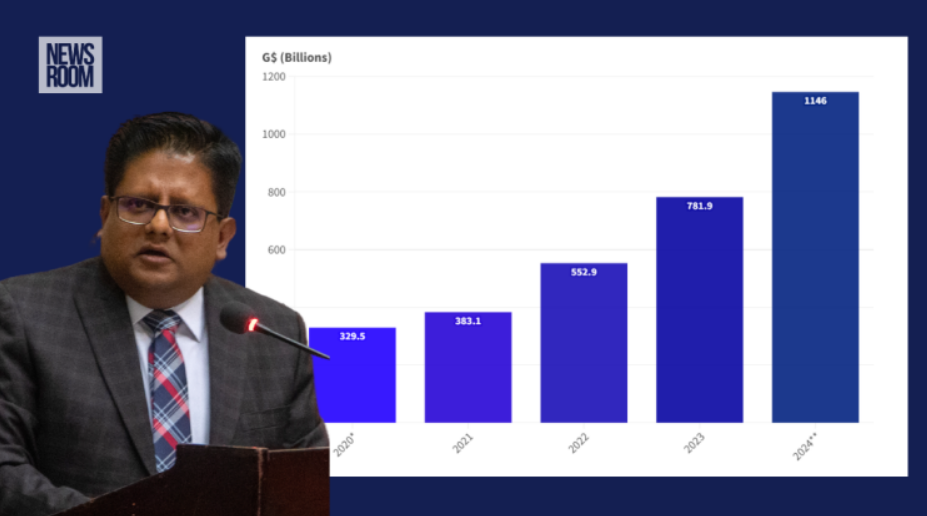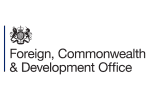2nd February 2024
The Irfaan Ali Administration has tabled a record US$5.496bn (GY$1.146tn) 2024 National Budget, some 47% higher than the US$3.75bn (GY$781.9bn) passed in 2023.
The massive increase in spending is being funded largely by revenue from the oil and gas sector, which is projected to cover 29% of the budgeted expenditure.
Delivered under the theme “Staying the course: Building prosperity for all,’ Finance Minister Ashni Singh in his fifth budget presentation, said that this latest package was a reflection of the Ali Administration’s commitment to building on the socio-economic advancements since taking office after the 2020 elections.
Singh highlighted the government’s vision for ensuring every Guyanese family has access to essential services and opportunities for economic empowerment.
“Budget 2024 is a budget for all Guyanese, not only public servants who will benefit from salary increases and cash grants… but we cast the budget in a particular frame (wherein) no other time in our country’s history, entrepreneurial opportunities are so abound,” said the finance minister during his presentation.
The budget reiterated Guyana’s robust economic performance, with a 33% real GDP growth last year, primarily fuelled by the expanding oil and gas sector, which along with the support services industry, notably outpaced the declines in gold and bauxite mining.
In 2023, the Natural Resource Fund (NRF) saw deposits amounting to US$1.6bn from petroleum revenue, culminating in a year-end balance of US$1.97bn, including interest earnings. The fund garnered US$1.39bn in profit oil contributions, with US$576.6mn coming from Liza Destiny and US$822.3mn from Liza Unity. Some US$218.1mn also came from royalty payments to the NRF by the Stabroek Block operator, ExxonMobil.
Key allocations in the budget include GY$95.7bn (US$457.67mn) to the energy sector to meet short-term needs, double generating capacity, transition to cleaner energy, and improve the transmission and distribution network. The flagship 300 MW gas to energy project is allocated GY$80bn (US$382.59mn), aiming to halve electricity costs upon completion.
The agricultural sector is allocated nearly GY$97.6bn (US$466.77mn), focusing on drainage, irrigation, and flood management, with significant investments in various sub-sectors to enhance production and support agro-processing.
The budget also addresses infrastructure with GY$204.1bn (US$976.1mn) for roads and bridges, and GY$73.2bn (US$350.13mn) for community roadworks; figures which some have called excessive.
“A nation must invest in ending poverty and its working poor must get a better deal… I feel that that has not happened with the budget, it is important then that we feel that these monies should have been more spread across rather than being given largely to what I regard as 1,000 contractor cronies capitalists,” said Opposition MP Khemraj Ramjattan as he slammed the budget’s large allocations to infrastructure projects.
The health sector allocation stands at GY$129.8bn (US$620.86mn), as the country moves to aggressively address health standards and resources, while the housing sector sees an increase to GY$78bn (US$373.05mn), continuing the construction of affordable homes across income categories. The Finance Minister revealed that some 1,165 homes had been completed, while construction continues on another 1,134.
Education receives GY$135.2bn (US$646.91mn), with GY$4.1bn (US$19.62mn) supporting the University of Guyana as the government moves to increase access by reducing tuition payments. Sports infrastructure is allocated GY$4.6bn (US$22.02mn) in furtherance of the government’s commitment to invest in world-class facilities for citizens.
The government also announced a host of new fiscal measures in the budget, including an increase in the income tax threshold to GY$100,000 (≈US$480) effectively raising the annual Personal Allowance to GY$1.2mn (≈US$5,750) from GY$1.02mn (≈US$4,888).
To encourage individuals to secure life and medical insurance, the allowance for Life and Medical Insurance which permits taxpayers to deduct the premiums paid for life and medical insurance from their taxable income will be increased to 10% of their earnings or GY$50,000 (≈US$240) each month, depending on which is less.
Additionally, duties and Value-added Tax (VAT) will be removed from sport equipment, certain technological items such as cell phone accessories, and firefighting equipment.
Addressing the economic burden of elevated fuel prices, the government plans to maintain a 0% excise tax on petroleum products, while also containing rising freight charges by extending the directive for computing import taxes using pre-pandemic freight costs for another year.
This is a lead article from Caribbean Insight, The Caribbean Council’s flagship fortnightly publication. From The Bahamas to French Guiana, each edition consists of country-by-country analysis of the leading news stories of consequence, distilling business and political developments across the Caribbean into a single must-read publication. Please follow the links on the right-hand side of this page to subscribe, or access a free trial.
Photo Credit: News Room Guyana







